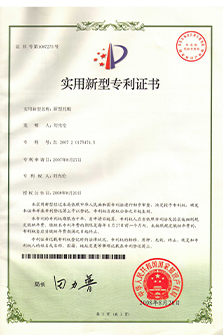 Afrikaans
Afrikaans  Albanian
Albanian  Amharic
Amharic  Arabic
Arabic  Armenian
Armenian  Azerbaijani
Azerbaijani  Basque
Basque  Belarusian
Belarusian  Bengali
Bengali  Bosnian
Bosnian  Bulgarian
Bulgarian  Catalan
Catalan  Cebuano
Cebuano  Corsican
Corsican  Croatian
Croatian  Czech
Czech  Danish
Danish  Dutch
Dutch  English
English  Esperanto
Esperanto  Estonian
Estonian  Finnish
Finnish  French
French  Frisian
Frisian  Galician
Galician  Georgian
Georgian  German
German  Greek
Greek  Gujarati
Gujarati  Haitian Creole
Haitian Creole  hausa
hausa  hawaiian
hawaiian  Hebrew
Hebrew  Hindi
Hindi  Miao
Miao  Hungarian
Hungarian  Icelandic
Icelandic  igbo
igbo  Indonesian
Indonesian  irish
irish  Italian
Italian  Japanese
Japanese  Javanese
Javanese  Kannada
Kannada  kazakh
kazakh  Khmer
Khmer  Rwandese
Rwandese  Korean
Korean  Kurdish
Kurdish  Kyrgyz
Kyrgyz  Lao
Lao  Latin
Latin  Latvian
Latvian  Lithuanian
Lithuanian  Luxembourgish
Luxembourgish  Macedonian
Macedonian  Malgashi
Malgashi  Malay
Malay  Malayalam
Malayalam  Maltese
Maltese  Maori
Maori  Marathi
Marathi  Mongolian
Mongolian  Myanmar
Myanmar  Nepali
Nepali  Norwegian
Norwegian  Norwegian
Norwegian  Occitan
Occitan  Pashto
Pashto  Persian
Persian  Polish
Polish  Portuguese
Portuguese  Punjabi
Punjabi  Romanian
Romanian  Russian
Russian  Samoan
Samoan  Scottish Gaelic
Scottish Gaelic  Serbian
Serbian  Sesotho
Sesotho  Shona
Shona  Sindhi
Sindhi  Sinhala
Sinhala  Slovak
Slovak  Slovenian
Slovenian  Somali
Somali  Spanish
Spanish  Sundanese
Sundanese  Swahili
Swahili  Swedish
Swedish  Tagalog
Tagalog  Tajik
Tajik  Tamil
Tamil  Tatar
Tatar  Telugu
Telugu  Thai
Thai  Turkish
Turkish  Turkmen
Turkmen  Ukrainian
Ukrainian  Urdu
Urdu  Uighur
Uighur  Uzbek
Uzbek  Vietnamese
Vietnamese  Welsh
Welsh  Bantu
Bantu  Yiddish
Yiddish  Yoruba
Yoruba  Zulu
Zulu Understanding Conveyor Belt Drive Rollers and Their Applications in Material Handling Systems
Understanding Conveyor Belt Drive Rollers
Conveyor belt systems are ubiquitous in various industries, offering an efficient method for transporting materials from one location to another. At the heart of these systems are conveyor belt drive rollers, crucial components that ensure the smooth operation and movement of the conveyor belts. This article delves into the importance, functionality, and types of drive rollers in conveyor systems.
The Importance of Drive Rollers
Drive rollers, often referred to as drive pulleys or head rollers, play a vital role in conveyor systems. They are the primary interface between the motorized part of the conveyor and the belt itself. When the motor is activated, it turns the drive roller, which, in turn, moves the conveyor belt. This simple yet effective mechanism underpins the reliability of the conveyor system, making drive rollers essential for optimal performance.
A well-functioning drive roller contributes to the longevity and efficiency of a conveyor belt system. Degraded or malfunctioning rollers can lead to increased wear on the belt, misalignment, and, ultimately, system failure. Therefore, choosing the right drive roller and maintaining it properly are crucial steps for any operation relying on conveyor systems.
How Drive Rollers Work
The operation of drive rollers is rooted in basic mechanical principles. When the electric motor activates the drive roller, it creates rotational energy. This energy is then transferred to the conveyor belt, causing it to move along the conveyor’s path. The grip between the roller and the belt is fundamental; hence, drive rollers are typically designed with a textured surface to enhance friction and minimize slippage.
Moreover, bearings within the drive roller allow for smooth rotation and efficient energy transfer. The configuration and quality of these bearings can significantly impact the overall efficiency of the conveyor system. Proper alignment and tension of the belt around the drive roller are also necessary to ensure seamless functionality.
Types of Conveyor Belt Drive Rollers
Drive rollers come in various designs, materials, and sizes, each tailored for specific applications
. Here are some common types of conveyor belt drive rollersconveyor belt drive rollers

1. Solid Drive Rollers These are commonly used due to their durability. Made from steel or aluminum, solid drive rollers are designed for heavy-duty applications where high strength is required.
2. Hollow Drive Rollers Lighter than solid rollers, hollow drive rollers are typically used in applications requiring less weight while still providing adequate strength. They may also incorporate features like a shaft that accommodates belt tensioning systems.
3. Lagged Drive Rollers These rollers have a layer of material, often rubber, bonded to their surface to improve grip and traction. Lagged rollers are especially useful in applications involving heavy material loads or inclined conveyor systems.
4. Drive Rollers with Dimpled Texture For specific applications, especially in environments requiring high grip, rollers with a dimpled texture can prevent slippage and enhance belt traction.
5. Adjustable Drive Rollers These rollers allow for tension adjustment of the conveyor belt. This feature is essential for ensuring optimal belt performance and reducing wear over time.
Maintenance of Drive Rollers
Regular maintenance of conveyor belt drive rollers is vital in ensuring longevity and efficiency. Routine inspections should focus on checking for wear and tear, alignment, and lubrication of bearings. Addressing these issues promptly can prevent significant system failures and costly downtime.
In addition, it is important to monitor the tension of the conveyor belt. An overly loose or tight belt can lead to premature failure of the drive rollers and affect the entire conveyor system's performance.
Conclusion
Conveyor belt drive rollers are integral components of any efficient conveyor system. Their design, material, and maintenance can significantly influence the overall productivity of material handling operations. By ensuring proper selection, installation, and maintenance of drive rollers, businesses can enhance their operational efficiency while minimizing downtime and maintenance costs. Understanding the function and importance of these devices is critical for anyone involved in industries that rely on conveyor systems, from manufacturing to logistics.
-
Revolutionizing Conveyor Reliability with Advanced Rubber Lagging PulleysNewsJul.22,2025
-
Powering Precision and Durability with Expert Manufacturers of Conveyor ComponentsNewsJul.22,2025
-
Optimizing Conveyor Systems with Advanced Conveyor AccessoriesNewsJul.22,2025
-
Maximize Conveyor Efficiency with Quality Conveyor Idler PulleysNewsJul.22,2025
-
Future-Proof Your Conveyor System with High-Performance Polyurethane RollerNewsJul.22,2025
-
Driving Efficiency Forward with Quality Idlers and RollersNewsJul.22,2025





























